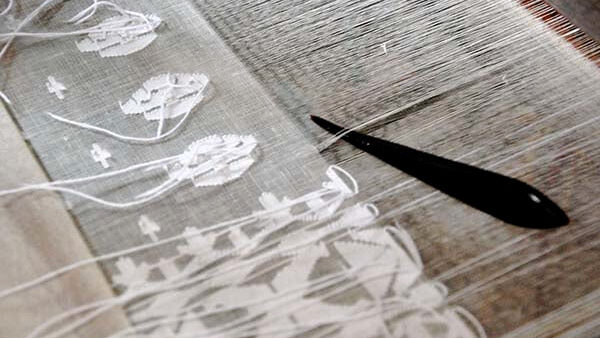Traditional Prints vs. Handloom Weaves: Choosing Authenticity Over Imitation
In a world brimming with options, fashion often becomes a blend of authenticity and imitation. One such debate arises when we talk about traditional prints of weaves versus actual handloom weaves. Let’s delve into the differences, both in terms of artistry and cultural significance, between prints of traditional weaves and actual handwoven creations.
The Story Behind Every Weave
A handloom saree is not just fabric; it’s a labor of love. Each saree tells the story of its maker—artisans who spend weeks, sometimes months, weaving intricate designs on looms passed down through generations. Every thread carries the cultural heritage of its region, from the Banarasi weaves of Uttar Pradesh to the Pochampally ikats of Telangana.
On the other hand, printed sarees replicate these designs through machines. While they may borrow patterns inspired by traditional weaves, they lack the texture, authenticity, and emotional depth that come from the hands of a weaver.
How Are They Made?
- Traditional Prints of Weaves:
- Designs are printed on fabric using digital or block-printing techniques.
- They are mass-produced and cost-efficient.
- The patterns are often inspired by traditional weaving designs but lack the dimensional richness of a true handloom weave.
- Actual Handloom Weaves:
- Created manually by artisans using traditional wooden looms.
- Involve time, skill, and patience to craft each saree.
- Patterns are woven into the fabric, giving it a unique texture and depth that printed designs can’t replicate.
Why It Matters
1. Cultural Significance
Wearing an actual handloom weave is a tribute to the cultural heritage of India. It’s a way to celebrate the traditions, stories, and artistry of our ancestors. A printed saree might look similar, but it lacks the cultural and historical connection embedded in the weave.
2. Artisanal Support
Buying handloom sarees directly supports the livelihoods of artisans, many of whom struggle to keep their craft alive in the face of industrialization. Every handloom saree you wear is a step toward preserving an art form that’s been part of India’s identity for centuries.
3. Quality and Longevity
Handloom sarees are made with superior craftsmanship and often last longer than printed alternatives. The weave is more durable and retains its charm over years of use, making it a sustainable choice.
4. Emotional Connection
There’s a certain pride in owning and wearing something handcrafted. Knowing the time, effort, and skill behind a handloom saree makes it more than just clothing—it becomes a piece of art.
When to Choose What?
While handloom sarees are undoubtedly superior in artistry and cultural significance, printed sarees have their own appeal for specific purposes:
- Choose Prints When:
- You’re looking for a budget-friendly, casual option.
- You need something lightweight and easy to care for.
- You want to experiment with bold, modern designs inspired by traditional motifs.
- Choose Handloom Weaves When:
- You want to make a statement at a formal event or celebration.
- You value authenticity and want to honor traditional craftsmanship.
- You’re building a timeless wardrobe with sustainable and durable pieces.
Why Tatva Stands for Handloom Weaves
At Tatva, we’re passionate about preserving the essence of Indian handloom. Our sarees aren’t just garments—they’re canvases of tradition, woven with care by artisans whose skills are unmatched.
While printed sarees may mimic the aesthetics of traditional weaves, nothing can replace the soul of an actual handloom saree. When you choose handloom, you’re not just buying a saree; you’re embracing a story, supporting a community, and preserving a legacy.






